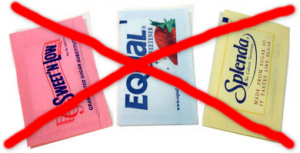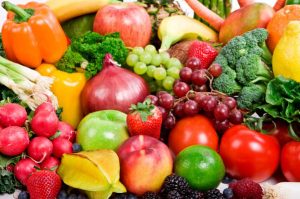24 Jan Anti Inflammatory Diet
Have you ever been stung by a bee?
 Even more common, have you ever gotten sunburned? In both cases your skin becomes red and inflamed and usually an ointment with anti-inflammatory properties (i.e., Benadryl) helps.
Even more common, have you ever gotten sunburned? In both cases your skin becomes red and inflamed and usually an ointment with anti-inflammatory properties (i.e., Benadryl) helps.
Now imagine that same reaction, but internally.
Imagine your organs and internal tissues becoming irritated and swollen. And imagine it happening on a regular basis! My whole body hurts just thinking about it, and there’s no easy cure like Benadryl to help! It takes an anti inflammatory diet to make a difference.
Inflammation is an immune response.
Whether it’s due to an external bee sting or an internal food allergy, the reaction is a natural defense where the body secretes histamine in the area of the trauma. If the trauma is something like an ankle sprain, fluid and white blood cells flood into the area to start the healing process. If left untreated, the body’s own natural reaction to the trauma causes extreme swelling and pain. There’s the swelling and bruising that you can see, but there’s a lot of internal inflammation that you can’t, and it all has to be treated together.
So how does this relate to an anti inflammatory diet?
Surely a special diet won’t keep someone from twisting their ankle, right?! Where the anti-inflammatory diet becomes important is in preventing chronic illnesses that are directly linked to inflammation within the body. For example, common reactions to conditions such as asthma, allergies, arthritis, colitis, acid reflux, and some auto-immune conditions are all due to over-inflammation. And then there are diseases like cancer and heart disease that also can be directly influenced by chronic inflammation. What most people (who have chronic conditions or diseases like the ones listed) don’t realize is that the diets of most Americans are centered around inflammatory foods. Making changes in what we eat can greatly reduce inflammation. So reducing inflammatory foods = potentially reducing chronic disease!
Environmental factors
Now there are obviously environmental factors like parasites, bacterial and viral infections, as well as contact with toxins and  allergens are all out of our control. What IS within our control is reducing our intake of refined sugars, alcohol, food additives like MSG and aspartame, gluten, trans fats, and Omega-6 fatty acids.
allergens are all out of our control. What IS within our control is reducing our intake of refined sugars, alcohol, food additives like MSG and aspartame, gluten, trans fats, and Omega-6 fatty acids.
Gluten is a protein found in wheat, rye or barley; or any product containing them. Omega-6 fatty acids are found in soybean, safflower, and sunflower oils, meat and dairy products. Trans fats are mainly found in processed baked goods. ALL of these are found to cause internal inflammation. And if you’re a cigarette smoker, it’s like stoking the inflammatory fire even more!
What can we ADD to our diet?
So while we know what we need to CUT OUT of our diets, let’s talk about what we can ADD to reduce inflammation. And wherever possible, GO ORGANIC!
- LOW GLYCEMIC FRESH FRUITS: raspberries, blueberries, blackberries, strawberries, oranges, grapefruit, nectarines, peaches, plums, cherries, apples, and pears.
- NON-STARCHY FRESH VEGETABLES: chard, kale, spinach, collard greens, broccoli, brussel sprouts, cauliflower, bok choy, carrots, beets, sweet potatoes, squashes, onions, and mushrooms.
- “GOOD” FATS: olive oil, coconut oil, nuts (especially walnuts), seeds (hemp & flax), and avocados.
- PROTEINS: chicken, omega-3 enriched eggs, live culture yogurts, salmon, herring, black cod, and sardines.
- “HEALTHY” TREATS: plain dark chocolate (70% pure coco), unsweetened dried fruits, and limited red wine.
- SPICES: turmeric, curry (contains turmeric), ginger, garlic, chili peppers, basil, cinnamon, rosemary, and thyme.
- SUPPLEMENTS: high quality multi-vitamins that include key antioxidants, vitamins C & D, Co-Enzyme Q-10 (a mineral with antioxidant and boosts immune function), whole food raw greens, probiotics, flax or fish oil and vitamin D
 Finally, along with healthy eating, incorporating consistent exercise and stress reduction are also key factors to reducing inflammation in your body. Even if you aren’t aware of any significant health issues, sticking to an anti-inflammatory diet is a positive path to take. It’s my personal choice to do so, and I can tell you that it makes a complete difference in how I feel EVERY DAY!
Finally, along with healthy eating, incorporating consistent exercise and stress reduction are also key factors to reducing inflammation in your body. Even if you aren’t aware of any significant health issues, sticking to an anti-inflammatory diet is a positive path to take. It’s my personal choice to do so, and I can tell you that it makes a complete difference in how I feel EVERY DAY!
For any help with an eating plan loaded with lots of anti-inflammatory foods take a look at several plans HERE.
“Be Happy…Be Healthy…Be Fit!”
– Natalie Jill
Give me 7 days to teach you the habits that will change your life forever! Get your 7 Day Jump Start HERE.
